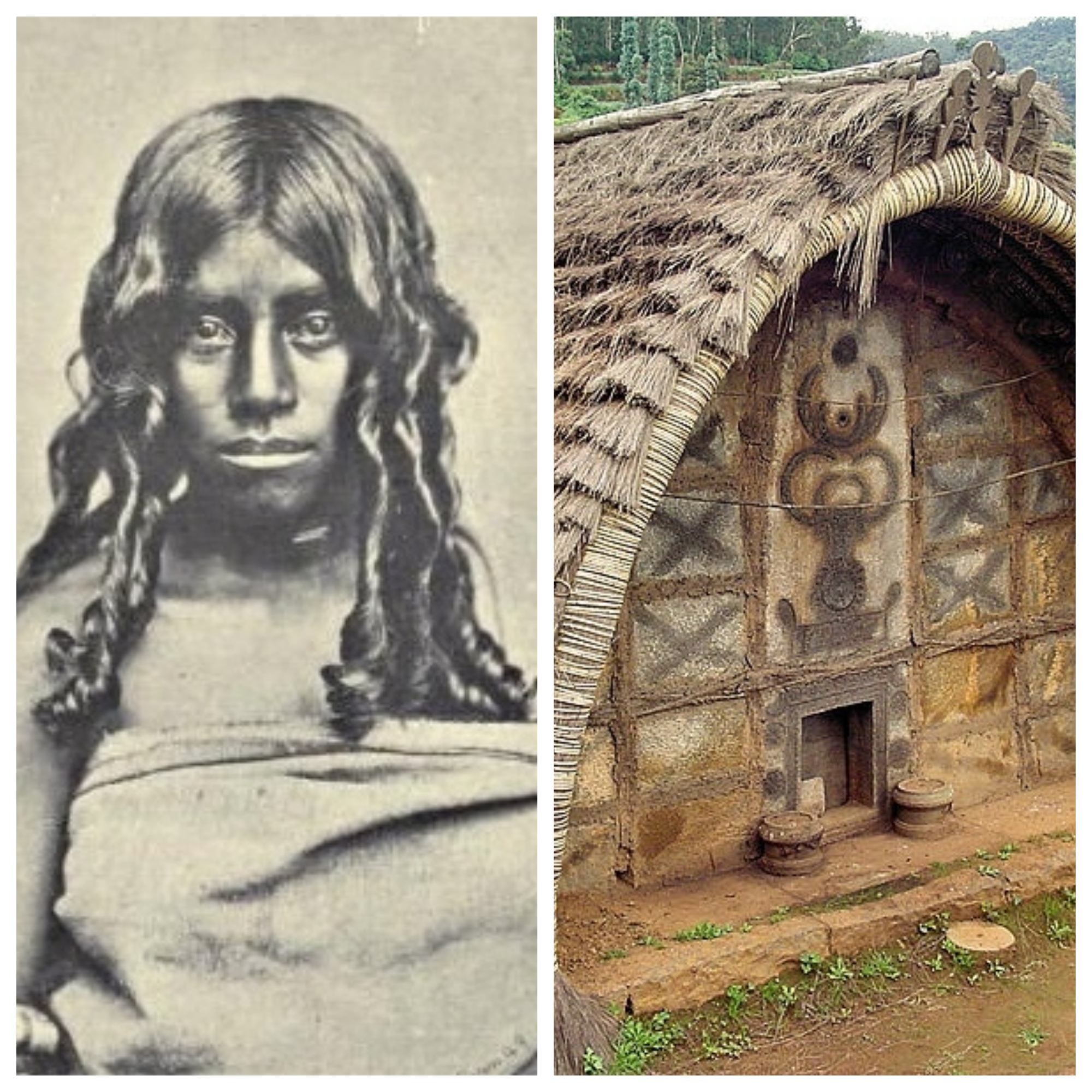The original homes of the Toda people, an ancient Indian tribe

There are many different tribes of people in India. One of them, the Toda tribe, living on the Nilgiris plateau, has some fascinating customs relating to how they build their homes, their worship of the buffalo, and their funerary rites.
Though their culture, like many others, is evolving in modern times, their history is still captivating and should be shared and remembered.

According to the Encyclopædia Britannica, Toda traditionally lived in villages or munds of three to seven huts. Goods Home Design describe these huts as typically shaped like a half-barrel and measuring about 10 feet high, 18 feet long, and 9 feet wide.
The roof of the Toda hut, which extends all the way to the ground on the sides, is thatched and made from bamboo and a unique local grass, though local wood is sometimes used as well. The front and back walls are made from loose stones and frequently decorated with paintings.
The doorways are very low and require anyone who enters to stoop in order to get through. Although these huts still exist today, it is more common for Toda villages to contain more modern homes that look similar to homes throughout the rest of India.

The traditional way to earn a living among the Toda people was raising buffalo. The animals are so central to their way of life that they are considered sacred, and the Toda dairies are also temples, according to Frontline.
Priests, who are also dairymen, are very important to the multitude of rituals surrounding events such as milking the buffalo and making butter. The higher the social standing of the priest, the more rituals must be performed for each sacred event.
The temple-dairies are traditionally made the same way as the other Toda huts, but only men are permitted near them.
During ceremonies, only the priest is allowed inside the hut while other important men gather outside. Not all buffalo are used ritually, and they are separated into temple buffalo, which are considered more important, and buffalo for domestic use.

Buffalo feature highly in funeral rites as well. Traditionally, animals were sacrificed upon the death of a Toda. What kind and how many animals were to be sacrificed depended on social status. One temple and one domestic buffalo was killed when a man died.
If a very old or important woman died, two domestic buffalo were sacrificed. For any other woman, only one domestic one was sacrificed. If a child died, a buffalo calf was killed.

Temple buffalo were killed by priests, and domestic ones were sacrificed by other members of the community.
This was done by hitting the animal between the horns with the blunt end of an axe, and the person completing the sacrifice aimed to kill the animal with one blow and without shedding any blood as it was important for the funeral that the animal’s body was whole. This practice is dying out with the new generation.

It also used to be that each person would have two funerals. One occurred when the person was cremated, and the other occurred months or even years later, when parts of their physical remains were used in a separate ceremony.
The second ceremony is now very rare, and most, if not all, Toda only have one funeral.
Another interesting custom of the Toda is that, in some cases, brothers would all share one wife, and all of them would live together in one of the Toda huts.
Because true paternity was difficult to establish, when a woman was pregnant, one of her husbands would ceremonially present her with a bow an arrow, proclaiming himself to be the social father of the child, regardless of who its biological father actually was.

Although Toda culture has changed and many of these customs are no longer practiced, the Toda people are thriving.
The number of Toda has more than doubled since they were studied in the 1960s, and they are able to achieve a higher standard of living with agriculture than they did when they only raised buffalo. Furthermore, they are less isolated than they used to be and have access to more medical care than ever before.
Hopefully, the unique aspects of their culture, even if no longer practiced, will not be forgotten by subsequent generations.
